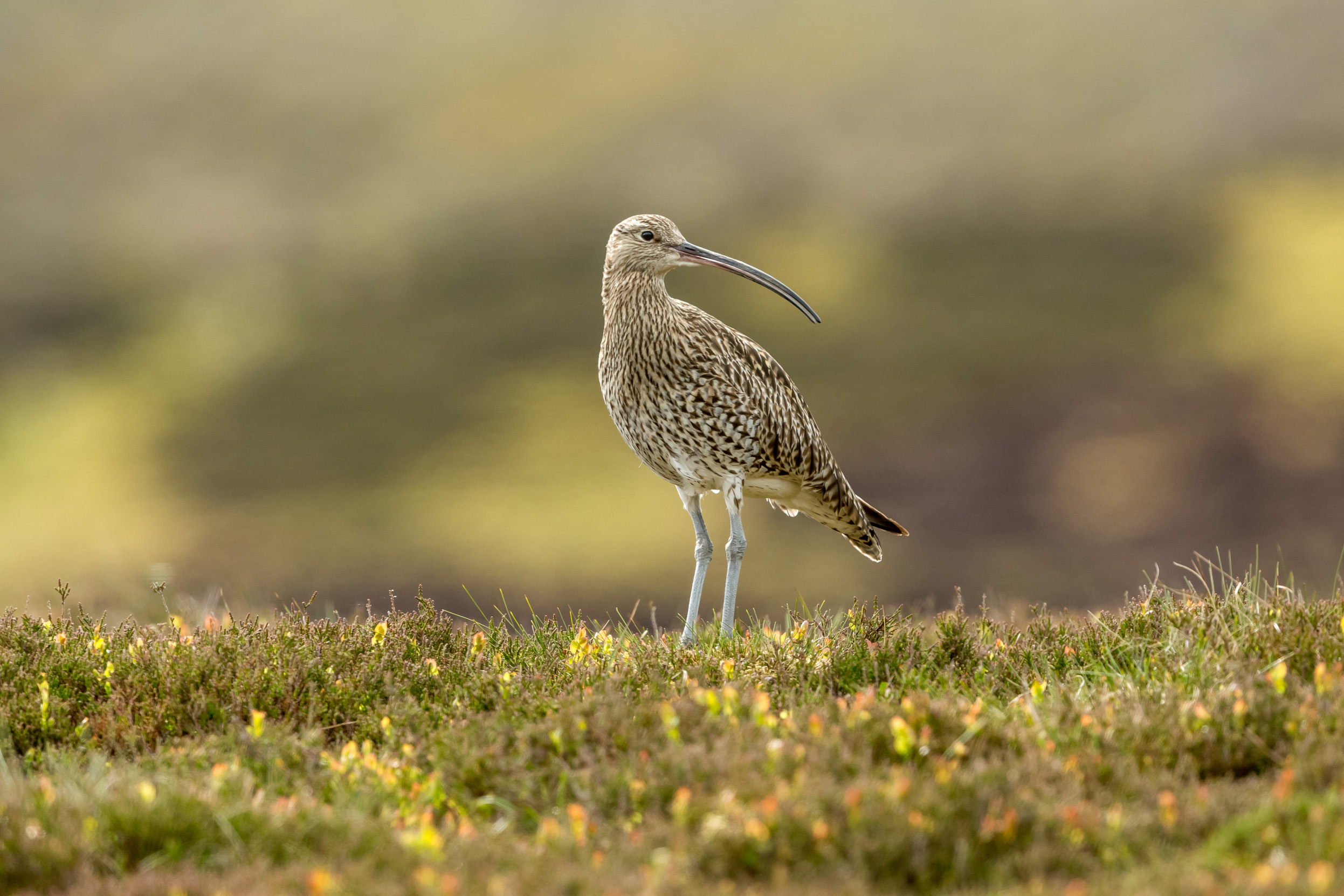How to identify
The Curlew is the largest European wading bird, found on estuaries in winter and moors in summer. Look for its down-curved bill, brown upperparts, long legs and listen for its evocative, bubbling, call.
In the winter, you’ll see Curlews feeding in groups on tidal mudflats, saltmarshes and nearby farmland. While some of our birds spend the winter in Ireland and France, we get an influx of Scandinavian-breeding Curlews here, who make the most of our relatively mild winters. In the spring and summer, Curlews migrate to their breeding grounds in upland areas of rough pasture, heather moorland and wetland.
Curlews breed on a range of habitats, but like rough grasslands, moorlands and bogs best of all. Intensive farming practices, including drainage and reseeding, are likely to have contributed to declines in breeding populations, as has the turning of areas of moorlands into forest. Together, these activities are having a huge impact on Curlew populations.
Curlew numbers are also impacted by nest predators, mainly foxes, who take eggs, chicks and adult birds. Like many wading birds, Curlews lay their eggs in a nest on the ground known as a ‘scrape’. The parents incubate the eggs for about four weeks, before the young leave the nest and roam around with their parents for a further four weeks until fledging.
The UK breeding population of Curlews is of international importance, with around 30% of the west European population spending winter in the UK. Despite this, there have been worrying declines in the breeding population in much of the UK. In 2015, Curlews were added to the Red List on the UK Conservation Status Report. Red is the highest conservation priority, with species on this list needing urgent action. Curlews are struggling, with big declines in breeding populations and ranges. They urgently need our help.Key
- Resident
- Passage
- Summer
- Winter
* This map is intended as a guide. It shows general distribution rather than detailed, localised populations. - Jan
- Feb
- Mar
- Apr
- May
- Jun
- Jul
- Aug
- Sep
- Oct
- Nov
- Dec

